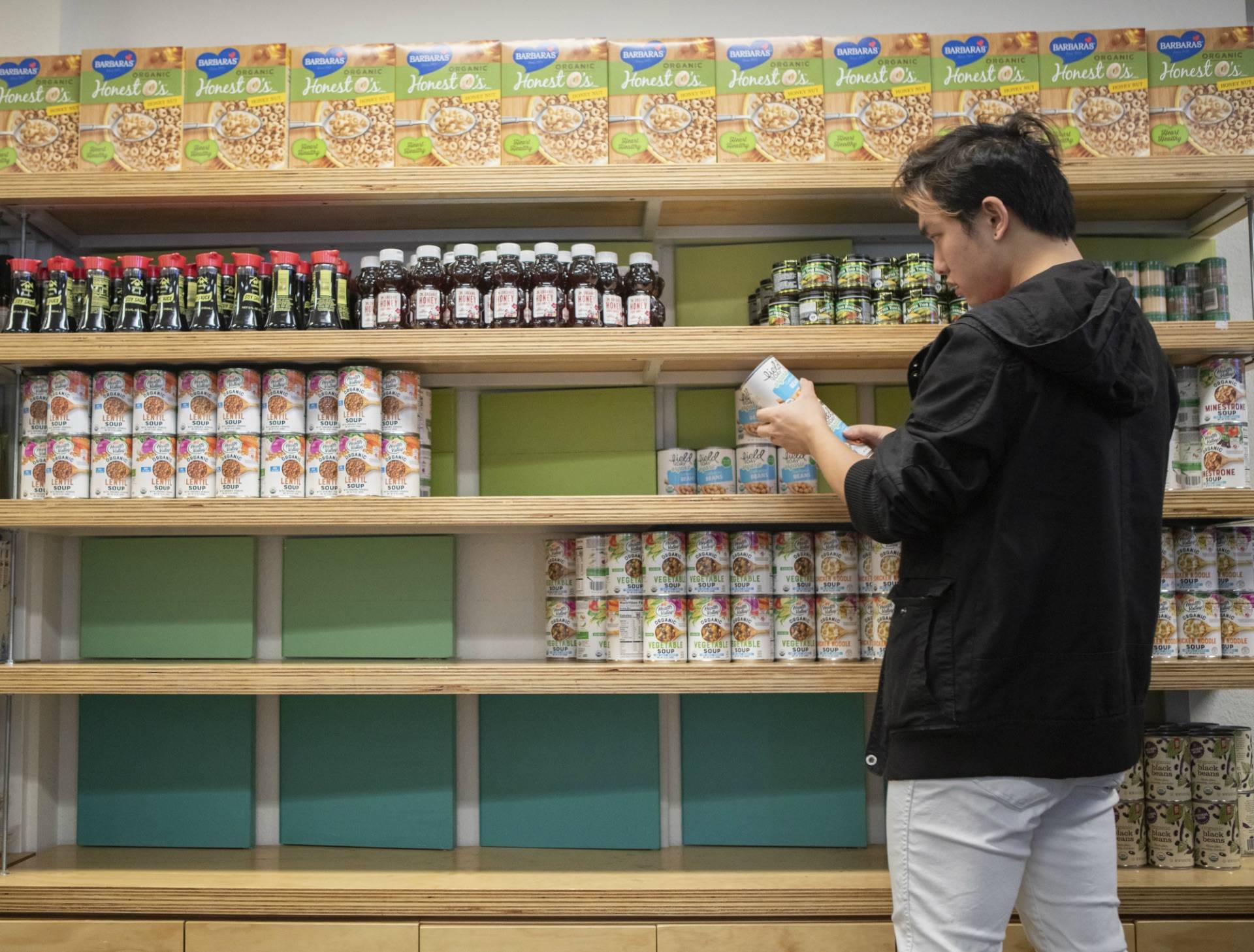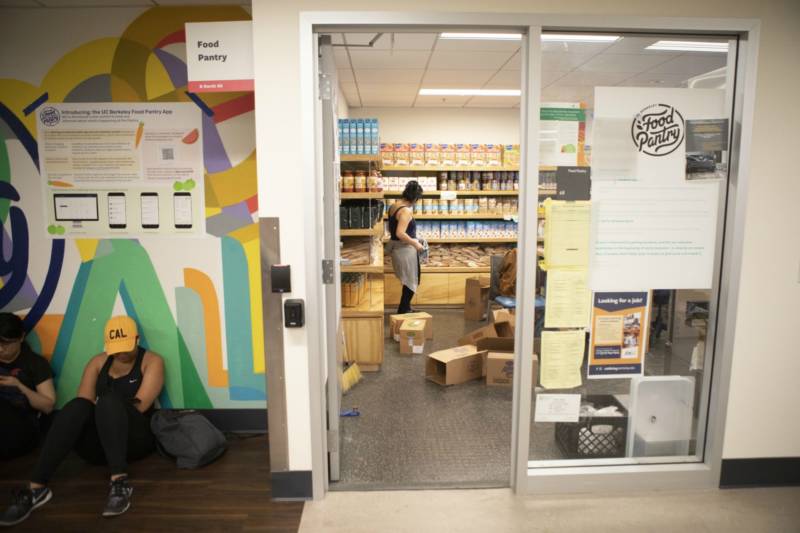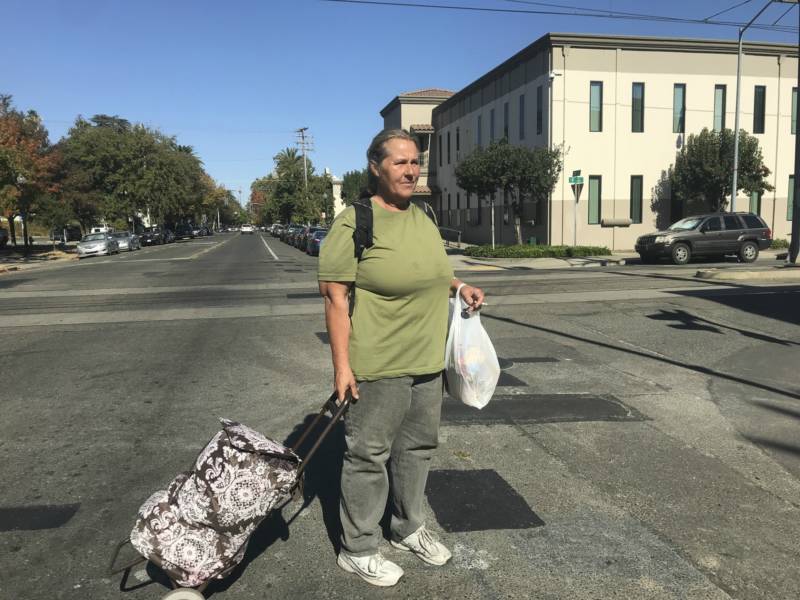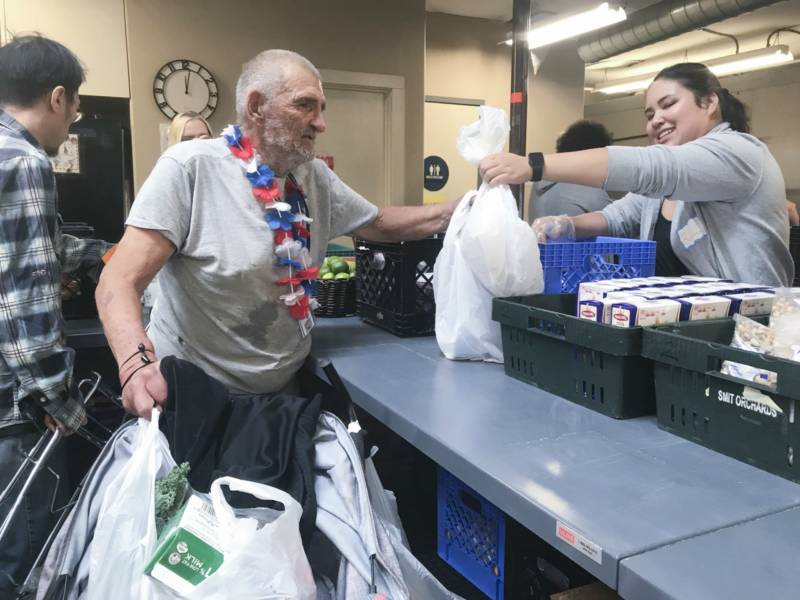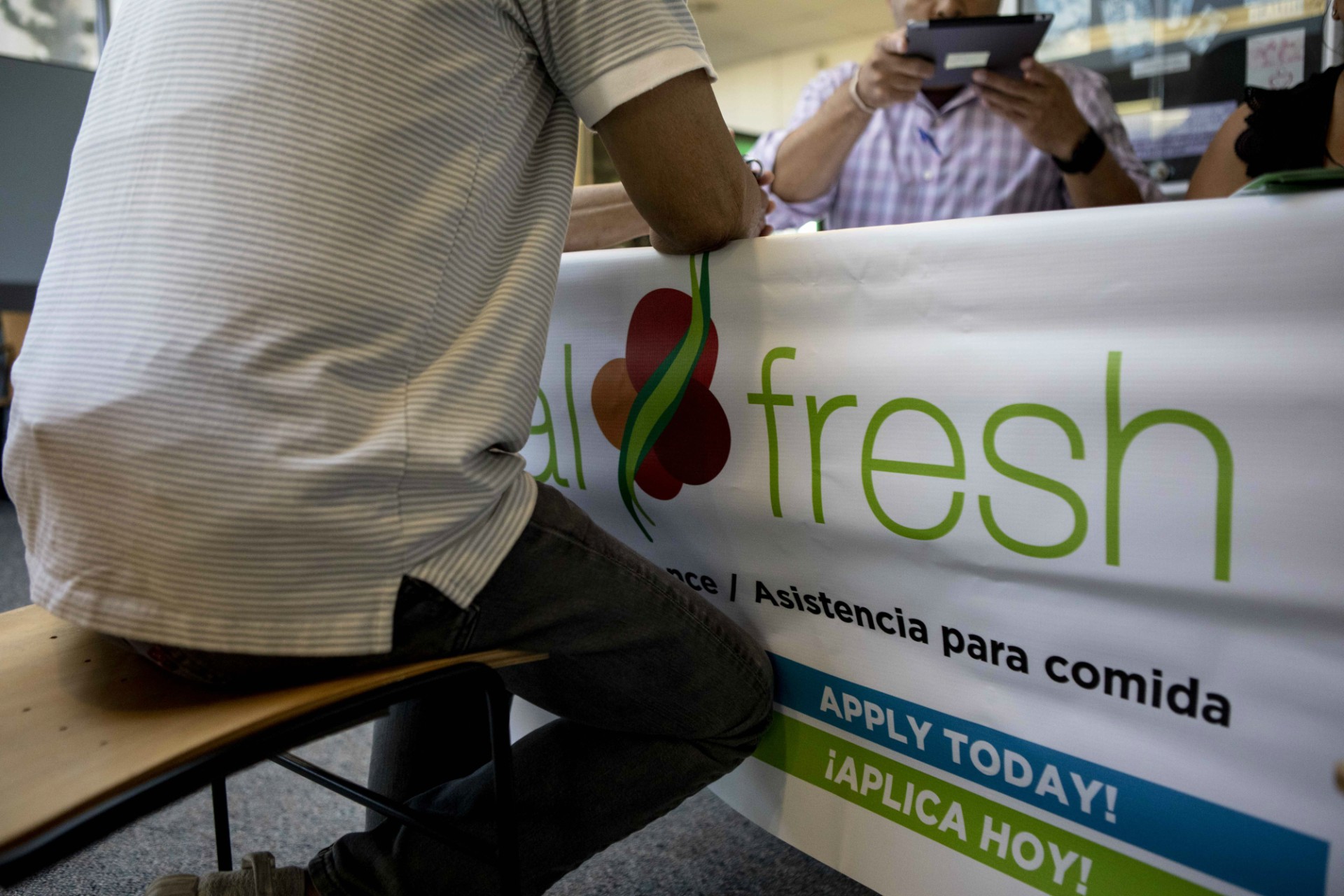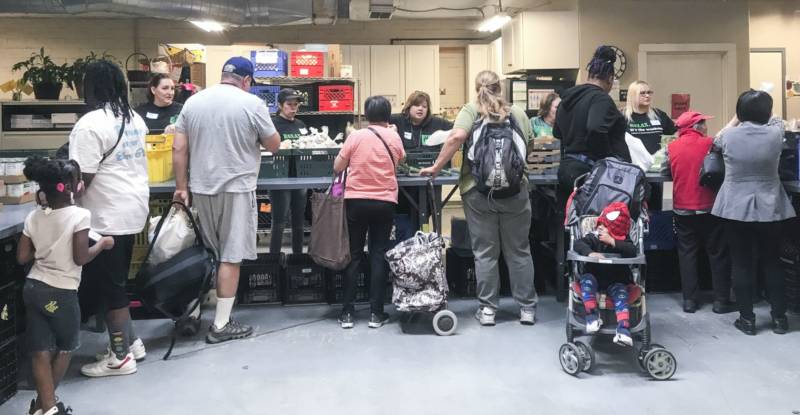A college student in Fresno who struggles with hunger has applied for food stamps three times. Another student, who is homeless in Sacramento, has applied twice. Each time, they were denied.
A 61-year-old in-home caretaker in Oakland was cut off from food stamps last year when her paperwork got lost. Out of work, she can’t afford groceries.
While picking up a monthly box of free food, a 62-year-old senior in San Diego told outreach workers that she won’t apply for food stamps because she worries that it might prevent her from qualifying for U.S. citizenship.
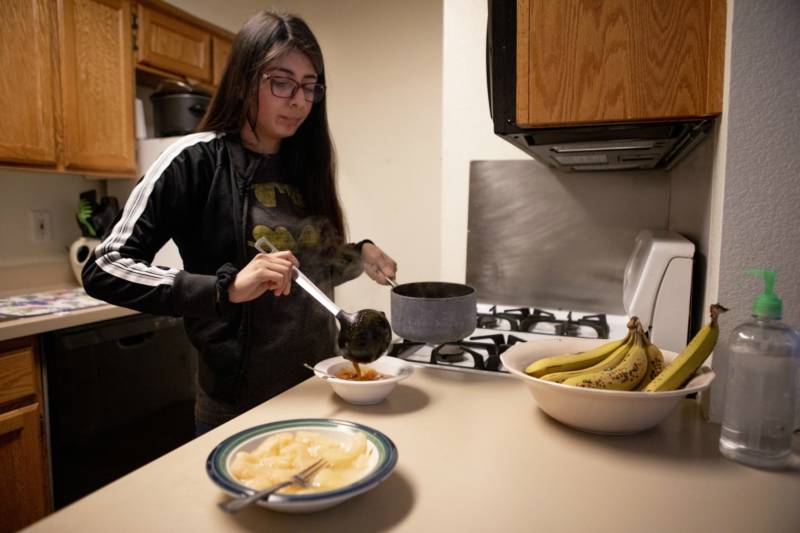
All told, roughly 1.6 million Californians are not getting help from the federal Supplemental Nutrition Assistance Program, known as CalFresh here, even though they are eligible. That means 28% of people with poverty-level budgets didn’t receive the food assistance they needed, according to 2017 state data.
At the bookends of adulthood, college students and seniors increasingly struggle to pay their bills yet they are among the groups most likely to miss out on the food stamps they qualify for, according to interviews with more than a dozen outreach workers and state and county officials. Obstacles also face immigrants, working families and homeless people, experts said. When these categories overlap, the hurdles to obtaining food stamps are often higher.
At California State University campuses in 2016, just 5% of students were getting food stamps even though one in every four is eligible. For seniors in California, just 19% get the assistance, compared with 42% of seniors nationally, according to 2015 data. And citizens who are immigrants are less likely to sign up than those who were born in the United States.
For those living on the edge, food stamps can make a big difference: The average CalFresh household each month earns $735 and gets $272 in food stamps, which amounts to $3 per meal. A family of two qualifies with $16,920 per year after paying expenses such as housing and childcare.
“On a human level, what that means is that we continue to allow Californians to go without food,” said Jessica Bartholow, a policy advocate at the Western Center on Law and Poverty.
California’s low enrollment is not inevitable. Nine states, including neighbors Oregon and Washington, enrolled nearly every eligible person in 2016, according to federal data, while California had the fifth lowest rate in the nation.
Nearly 4.4 million Californians lack reliable access to sufficient food, including 644,300 seniors and 1,638,430 children. In a statewide survey of college students, 35% were food insecure.
Each story of someone who loses out on food stamps provides a lesson for how county officials and state lawmakers could clear the roadblocks that prevent people from getting help.
Here are some of their stories.
“It’s like a job itself to apply”
On an empty stomach, Beverly Callupe’s brain felt hazy and slow while her English instructor reviewed possible exam questions on the memoir The Glass Castle.
“I just try to write down everything and try to make sense of it after, when I’ve gotten some food,” said Callupe, 20, a Sacramento City College student. “Doing something as simple as reading just becomes so exhausting. Paying attention is really difficult. It is not the best state to go to class.”
Hunger has been a constant for Callupe since June, when she left what she describes as the abusive household of a parent and became homeless overnight. Now living in a shelter, she supplements free dinners there with the cheapest foods she can find: canned soup, pancake mix, granola bars, canned peaches. She often skips lunch, and said she goes to bed hungry “almost every single night.”
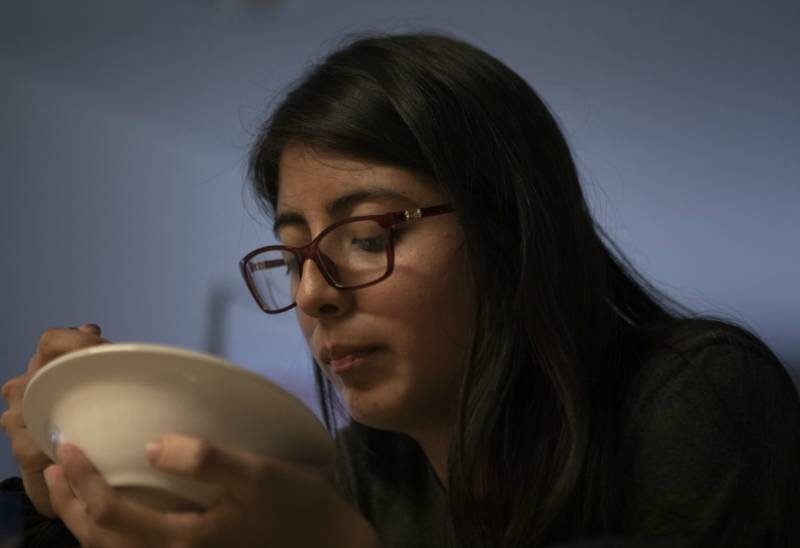
The first time Sacramento County denied Callupe’s CalFresh application, several months ago, she wasn’t sure why. The second time, a county worker told her that she needed to work more hours to qualify.
That’s because federal law bars full-time students from receiving CalFresh benefits unless they meet one of several exceptions or work at least 20 hours per week — an amount that can hurt their grades and delay graduation.
“I was really sad and frustrated because I was really depending on that,” said Callupe.
In late October, she dropped all of her courses to focus on finding a job. She is hesitant to apply for CalFresh again because she plans to enroll as a full-time student again next semester.
Many students also struggle to navigate the complex rules. Ruby Sultan first learned about CalFresh in a class for her major in Food Science and Nutrition at Fresno State University. The instructor assigned the students to live for one week on just $21 worth of food — a typical food stamp budget. To Sultan, the assignment felt like an abstract exercise.
“Now it’s like my real life,” said Sultan, 26, who has since moved out of her mother’s house, become financially independent and unsuccessfully applied for CalFresh three times.
Between odd jobs and teaching classes at three fitness studios, Sultan said she hardly has enough money to cover food and rent. But the aspiring dietitian refuses to let her budget diminish the quality of her diet, so she meticulously plans meals with fresh veggies, seeds and grains. Meanwhile, she holds off on other expenses, like textbooks.
Apart from the $25-$30 she spends on groceries each week, she relies on free rice, beans and oranges from a food pantry, and weekly hot meals at a local church.
Sultan frequently works over 20 hours a week but has struggled to prove it to Fresno County. The first time she was denied CalFresh, she couldn’t get pay stubs for one job in time. The second time, she hadn’t worked enough hours to qualify. The last time, in September, she was working enough hours but failed to get a boss to sign a form before time ran out.

Student hunger and homelessness in California is widespread. In a 2018 survey at 23 California State University campuses, more than 40% of students reported food insecurity while one in ten said they experienced homelessness in the past year.
“It really has to do with this kind of mythology about students that comes from the history of education being reserved for elite and middle class people,” said Bartholow of the Western Center on Law and Poverty. While previous generations might have been able to rely on their parents for help with food costs, she said, many of today’s students come from families already grappling with hunger.
Students who have children or receive certain other forms of aid — such as Cal Grants and federal work-study jobs — are still eligible for food stamps.
In recent years, California campuses have stepped up their efforts to help students like Callupe and Sultan negotiate the CalFresh bureaucracy. Some hold fairs in which hundreds sign up en masse.
Sacramento County sends county workers to fairs at two area colleges — though not to Callupe’s — several times a year to help students apply on the spot, said Media Officer Janna Haynes. Fresno County has trained staff at campuses to help students apply and has clarified letters to students, said Social Service Program Manager Angela Stillwell.
“The support is there if [students] have the time to seek it,” said Stillwell. But she said there’s only so much Fresno County can do to simplify the process given federal regulations.
